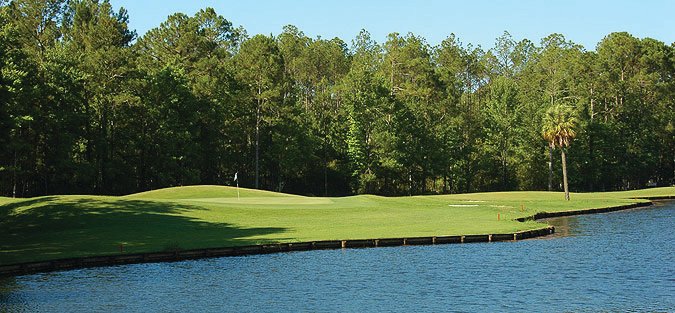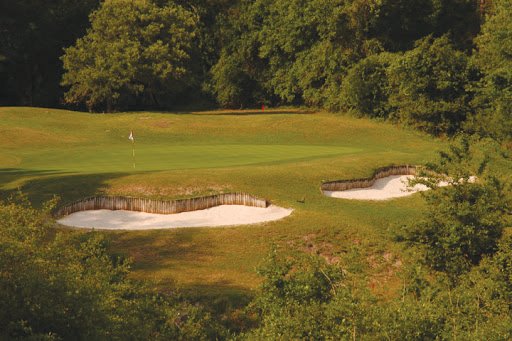Broken windows and promises
The Ravines, Orange Park: The death of country club living
CLAY COUNTY – Larry Lunsford still owns a golf cart, but it doesn’t run. Like everything else connected to Orange Park Country Club, it has been scuttled and left to collect the dirt and …
This item is available in full to subscribers.
Attention subscribers
To continue reading, you will need to either log in to your subscriber account, or purchase a new subscription.
If you are a current print subscriber, you can set up a free website account and connect your subscription to it by clicking here.
If you are a digital subscriber with an active, online-only subscription then you already have an account here. Just reset your password if you've not yet logged in to your account on this new site.
Otherwise, click here to view your options for subscribing.
Please log in to continueDon't have an ID?Print subscribersIf you're a print subscriber, but do not yet have an online account, click here to create one. Non-subscribersClick here to see your options for subscribing. Single day passYou also have the option of purchasing 24 hours of access, for $1.00. Click here to purchase a single day pass. |
Broken windows and promises
The Ravines, Orange Park: The death of country club living
CLAY COUNTY – Larry Lunsford still owns a golf cart, but it doesn’t run. Like everything else connected to Orange Park Country Club, it has been scuttled and left to collect the dirt and decay of indifference and nonuse.
Across the county, the ninth fairway at The Ravines Club and Lodge in Middleburg, once considered one of the most challenging holes in golf-rich Northeast Florida, is overgrown by weeds. Instead of pricy golf junkets, the course has been relegated to being the overgrown refuse to large rafters of wild turkeys, herds of deer and a generation of negligence.
Once prime resorts, both courses have been closed for years, leaving thousands of homebuyers who bought into country club living with nothing more than blighted tracts of land – and broken promises.
“In its time, it was a place to be. It was a great, great golf course,” Lunsford said.
The ending came so quickly, liquor is still stacked in the front window of the snack shack at the 10th tee. There’s no power in the stand, but there’s an opened suitcase of beer on a counter. The drinks inside the cooler are covered with mold and rust.
Around the corner from the shack, the 10th tee box marker is hidden among the brush. There are no distinguishing features of the 420-yard hole remaining.
The clubhouse is worse. Some of the windows have been boarded to hide broken glass. Some of the curtains are frayed. And the parking lot is eerily void of traffic or concern.
“The last time I was in the clubhouse, it looked like the inside of the Titanic,” said former member and homeowner’s association president John McCormack. “There were cobwebs on the walls; glasses were still half-full on the counter. It was quick. It’s a shame.”
McCormack is so disgruntled with Orange Park’s collapse he’s packing up and moving to Savannah. He hopes the fairways there are green, the sand is raked and the bills are paid.
While Orange Park’s closure seemed to come without warning, McCormack said the demise was expected.
“We saw it coming in the distance,” he said. “The club was teetering on not being in good shape one way or another. There was an initiative that was started to try to have mandatory social memberships. It was defeated. At that point and time, [club owner] Charles Raulerson basically said the heck with it. I’m done.
“By that time, we were down to 100 members – and 65 of those were tennis members. Only 35, like myself, were golf members.”
Raulerson sold the club to James Price, but he clearly didn’t have the financial resources to make it work. Price closed on the property in April 2018. After 29 years, the club closed 11 months later.
“We feel cheated,” Lunsford said. “Most of the people out here feel the same way. “When the golf course was sold, it was sold on the pretense this guy was going to come in and he knew how to run a golf course. I guess he had some kind of dealings up north with a nine-hole golf course. He came down here. They quit doing weddings and things like that to generate revenue.
“Then, we had two months of weather where it rained every day. The golf course got saturated. You couldn’t play it. They couldn’t mow it or nothing. It wasn’t getting any revenue and it went belly up because they didn’t have anything in reserve. They made tons of money back in the days doing weddings. It was a good place to come. They had big parties. All of a sudden, they stopped doing it.”
Lunsford pays his lawn service company extra to mow beyond his property line to the cart path at the 13th green. He said as many as 12 holes are still being mowed by residents who still practice on the fairways.
“But mainly, we don’t want it all grown up behind their house,” Lunsford said.
Lunsford’s disabled golf cart serves as a reminder of a lifestyle he used to enjoy – but now misses.
“I’ve still got my golf cart. The battery’s dead because I don’t use it,” he said. “As soon as I moved in, I bought my golf cart. Most of my friends had golf carts, too, but a lot of them have moved out because of the golf.”
Developers have tried to change at The Ravines for years
The Ravines catered to a mixed clientele. While it relied on the daily play of local members, but it also hosted a steady flow of golf junkets by travel groups. Many of the bungalows and apartments that were rented for weekend play now are being used as residential condominiums – some within a few yards of what used to be a meticulously groomed fairway carved through canyons of mature moss-draped oaks.
Designed by Ron Garl and 1988 Players Championship winner Mark McCumber, the Ravines was opened in 1979. The championship-caliber course closed in 2006 after residents first refused to agree to social memberships and then fought to keep two holes along Black Creek to be redesigned to accommodate new home construction. It was sold to investors in 2008 for $1.2 million in a foreclosure sale. Tennessee-based Ravines Holding Company won approval from the county council to redevelop 102 of 223 acres along the Black Creek to build 154 new homes.
For nearly 35 years, the course was the focus of numerous public hearings and zoning requests as developers wanted to take advantage of its subtle elevation changes and natural beauty to build exclusive high-end neighborhoods. Resident outrage played well with county officials, so owners Kenneth and Chris DeBusk “threw the keys at the bank and walked away,” according to former members.
Once rated as one of Florida’s top-20 courses, The Ravines quickly fell in disarray. And it never recovered.
Today, the clubhouse is hidden behind overgrown trees and a rickety chain-linked fence. The no trespassing signs are rusted and hung haphazardly. Windows are either missing or covered with boards.
The clubhouse now looks more like the set from television’s not a stylish showcase for elite members.
The swimming pool area is overgrown, too. In fact, the only evidence of the pool is portions of ladders sticking through the thicket.
A padlock and shoulder-high weeds keep players away from the tennis courts.
County Commissioners not getting into the golf business
Orange Park made a desperate final attempt to revive the club and its amenities when it asked the Board of County Commissioners to buy the property less than three weeks after the doors closed.
The commission voted 4-1 against it.
Commissioner Wayne Bolla, whose district includes Orange Park County Club, proposed a $7,500 feasibility study to purchase the club. The motion died when nobody else seconded the motion.
“We are not a county that can subsidize losses,” said Chairman Mike Cella. “We’re not high-powered investors here. We don’t have capital money to spend.”
Commissioner Gayward Hendry agreed, saying, “This is a heartbreaking situation. I can’t justify in my own mind spending money to make this unit whole when we’ve got so many other things in the county that the citizens are looking at us to provide.”
Residents blocked social memberships that may have saved both clubs
Both clubs tried unsuccessfully to create social memberships for all residents. That would provide both with the necessary cash flow that’s essential to keeping a course and clubhouse operational. Residents at the Ravines and Orange Park rejected the plans. In both cases, it was the trigger that led to the golf course and tennis courts being shut down.
McCormack said three years ago residents apparently weren’t interested in saving the club.
“They wanted to sell social memberships,” he said. “Even if it was $20 a home, with 1,100 homes in the front and back [of the community], that’s a lot of money that could have made the difference. Everyone would have benefited.”
The Ravines and Orange Park followed the same path as many other golf communities. The National Golf Foundation said more than 400 courses went defunct in 2016 and 2017. The country once had as many as 15,000 courses, but that number has dwindled to about 1,250.
The reason for most is a lack of cash flow and the eagerness of developers to build houses and commercial buildings.
The Ravines and Orange Park clearly fell into the cash flow trap.
Since there’s so much work to be done and too many bad memories, McCormack doesn’t have much hope the golf course will re-open. He thinks portions will be sold off for new housing and green spaces.
“It’s a shame because golf is booming, especially with COVID,” Lunsford said. “You go to the other courses – we play at Eagle Landing and Eagle Harbor now – and they’ve raised their prices because they can get it.”
Keywords
dead











